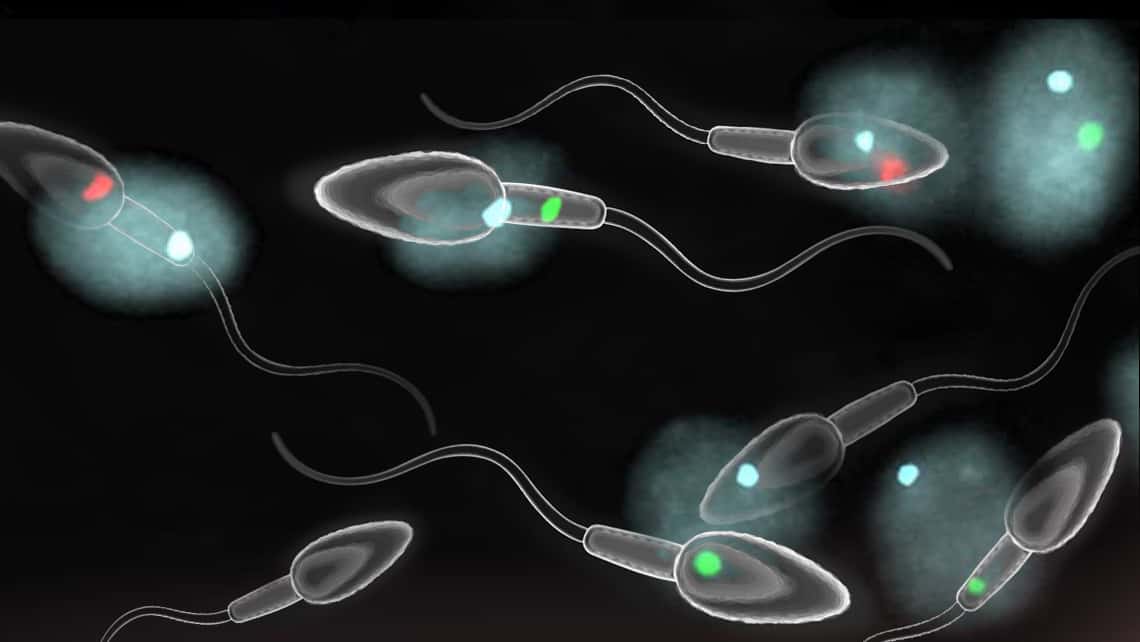
What information does a FISH procedure on spermatozoa provide us with?
When a fertility analysis in the male partner is limited to a seminogram or spermiogram, we only get a partial view of semen quality. A seminogram only provides us with information on the number and characteristics of sperm in the ejaculate (mobility, morphology…). It does not, however, tell us anything about other aspects such as sperm DNA integrity or chromosomal make-up. A comprehensive study of the male partner and his role in the couple’s infertility issues includes determining these complementary characteristics of the semen.
FISH (fluorescent in situ hybdridsation) analysis on spermatozoa is a cytogenetic technique which means genetic material in male gametes can be studied. Using fluorescent probes which bind to a specific chromosome, it is possible to know the number of chromosomes in each of the sperm in the ejaculate. Humans are a diploid species. In other words, we have two copies of each of the 23 types of chromosomes. Haploid cells (eggs or spermatozoa) are present in gametogenesis. These contain only one copy of each chromosome. The gametogenesis process is not 100% efficient and there is a certain proportion of gametes with an abnormal number of chromosomes (aneuploidies). Problems arise when aneuploidy levels are high.
In FISH spermatozoa analysis, 5 chromosomes are usually analysed: the X and Y sex chromosomes and chromosomes 13, 18 and 21. This analysis can be increased to cover other chromosomes if advisable based on the patient’s medical background.
- Chromosomes 16 and 22 in cases of repeat pregnancy loss.
- Chromosomes in abnormal karyotypes during the couple’s previous pregnancies.
- Chromosomes in the male partner’s abnormal karyotype.
FISH analysis of the ejaculate can help us to determine the quantity of spermatozoa with an abnormal chromosomal make-up and to evaluate if they are above normal levels.
FISH analysis is recommendable for sperm in couples with a background of recurrent pregnancy loss or implantation failure and in male partners with poor semen quality and abnormal karyotypes (translocation and polymorphisms).
Patients with pathological FISH analysis in sperm are at a greater risk of having embryos with chromosomal abnormalities and, therefore, with a decreased implantation capacity, a greater risk of pregnancy loss and the possibility of children being born with abnormal karyotypes.
Where FISH analysis in sperm is abnormal, and if it is advisable based on the couple’s medical background, Comprehensive Chromosome Screening (PGS/PGT-A/CCS) can be used to select embryos with a correct number of chromosomes and which will lead to a successful pregnancy and a healthy child.
Dr José A. Ortiz, biochemist at Instituto Bernabeu.
